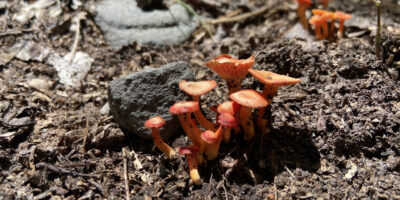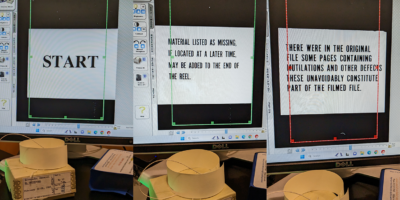By Talisa Feliciano
“I did not understand at the beginning of my teaching career that the majority of students would arrive in the classroom colonized in their minds and imaginations… I had not learned the skills that would enable me to facilitate the opening of closed minds” (emphasis mine, 2010: 35).—bell hooks
Conflict is a normal part of human interactions and relationships. There are many different types of conflict: internal, external, interpersonal, etc. Conflict is almost inherent to any social behavior over time but is not always extreme. It can be subtle, recurrent, or consistent.
During a recent TLC workshop, I focused on defining how conflict shows up in the classroom with a focus on how it can be engaged, rather than avoided, as a crucial pedagogical tool. Participants workshopped the term ‘conflict’ using our experiences of conflict in the class, reflecting on our emotional responses to conflict, as well as collectively developing strategies in response to conflict.
Conflicts that occur in a classroom should be engaged with and not ignored. This is both the educators’ and learners’ responsibilities. The first step in understanding what conflict is, is acknowledging when it occurs. Acknowledgment can look differently depending on the type of conflict. Sometimes it means assessing who is most impacted and naming that a conflict has happened/is happening. Then it requires understanding, unpacking, and, perhaps, but not always, reconciliation. When conflict gets ignored or brushed over, then space for the conflict to recur opens up. Instead, it is best to practice how to move through and engage conflict–this is how transformative learning occurs.
|
Feelings Participants Associated with Conflicts Triggering Internal conflict Upset Icky Adding weight to leadership and responsibility Dread |
As educators, we may not always feel equipped to deal with conflicts, especially since they usually involve intense emotional responses. Yet, emotional literacy is a form of knowing, and we can practice and grow our emotional literacy to be better educators. Below are some collective strategies to handle conflict in the classroom. However, this list is not comprehensive, and depending on the type of conflict, some strategies may work better than others. In contrast, others would be inappropriate in some situations. Choosing the best approach is always context-specific.
Strategies in Response to Conflict (Click the link for the full guide)
- Envisioning how to diffuse scenarios ahead of time
-
- Taking action to mediate
- Giving time
- Validating other experiences
- Growing our empathic senses
-
- Intentional use and awareness of body language
-
- Breathing
-
- Establishing boundaries
-
- Asking student input in establishing boundaries
- Sharing responsibilities
-
Potential Scenarios; Conflict + Strategy
Below are two fictitious scenarios depicting a conflict in the classroom and several strategies from the above list:
1. You are teaching an Introduction to Biology lab section. You have a strict ‘no phone’ policy on your syllabus, stating that a violation will result in an ‘F’ for the assigned lab. You notice someone texting while you explain the instructions and again during the experiment. At the end of class, you approach the person reminding them of the ‘no phone’ policy. They explain to you that their child is ill, and they need updates on the child’s wellness.
-
- Validating other experiences
- Growing our empathic senses
- Intentional use and awareness of body language
- Establishing boundaries; Asking student input in establishing boundaries
Learners do not fit a single mold and often have complicated lives with various responsibilities and needs. When we practice as educators how to grow our empathy, this requires understanding that not all learners have the same experiences. A learner who is a parent or primary caregiver will have responsibilities that require some bending to arbitrary rules such as ‘no phone’ policies with punitive consequences. When educators practice actively engaging students in establishing the boundaries in a learning space, it makes room for learners to be open and honest about their needs. It also requires the educator to be accountable for specific policies and explaining their logic. Educators should be willing to shift policies based on everyone’s needs in the classroom. If given the opportunity, the above learner could have communicated the need to be digitally available. In this scenario, you, as the instructor, have the choice to take into consideration the learners’ needs and concerns around implementing specific classroom policies or agreements.
2. You are teaching a general Social Sciences course that fulfills a requirement on Immigrant Communities. Your lecture on Immigration Law causes a heated debate when one student declares, “Allowing immigrants to come here illegally increases crime.” A group of students starts to individually question the person and their statements and begin to tease the student. The rest of the class laughs.
-
- Taking action to mediate
- Giving time
- Intentional use and awareness of body language; Breathing
- Establishing boundaries; Sharing responsibilities
This scenario should be acknowledged and diffused. Here, a harmful and biased comment was stated in the learning space and met with teasing, another form of harm. As the instructor, you can commit to mediate by stepping in and stopping the conversation. This can be verbal and, or it can involve physically positioning your body in the middle of the students with open arms. Leading the class in a moment of collective or individual breathing exercise can lower the stakes for everyone. The educator can carve out time to process the interaction individually or collectively. If people in this scenario feel harmed, it is essential to address it and understand in the classroom how that may not align with previously established boundaries.
It is crucial to acknowledge conflicts when they occur in the classroom, and to mediate or de-escalate, especially if the conflict causes harm. There are many strategies to employ when conflict arises. Some conflicts can be met with multiple strategies, while other conflicts should be met with a context-specific strategy. Engaging conflict allows for diversification of perspective in the classroom and is a vital part of decolonizing our pedagogical practices. The more that learners are incorporated into decision making processes in the classroom, the more comfortable they will become in expressing their novel and unconventional thoughts and ideas. The role of conflict as a pedagogical tool remains under theorized. Conflict is crucial to understanding the nuances of differences in diverse learning communities, and understanding their role encourages a more inclusive learning environment.
Talisa Feliciano is a PhD Candidate in Cultural Anthropology and has worked as an adjunct educator at City College, Hunter College, and Brooklyn College .










Leave a Reply